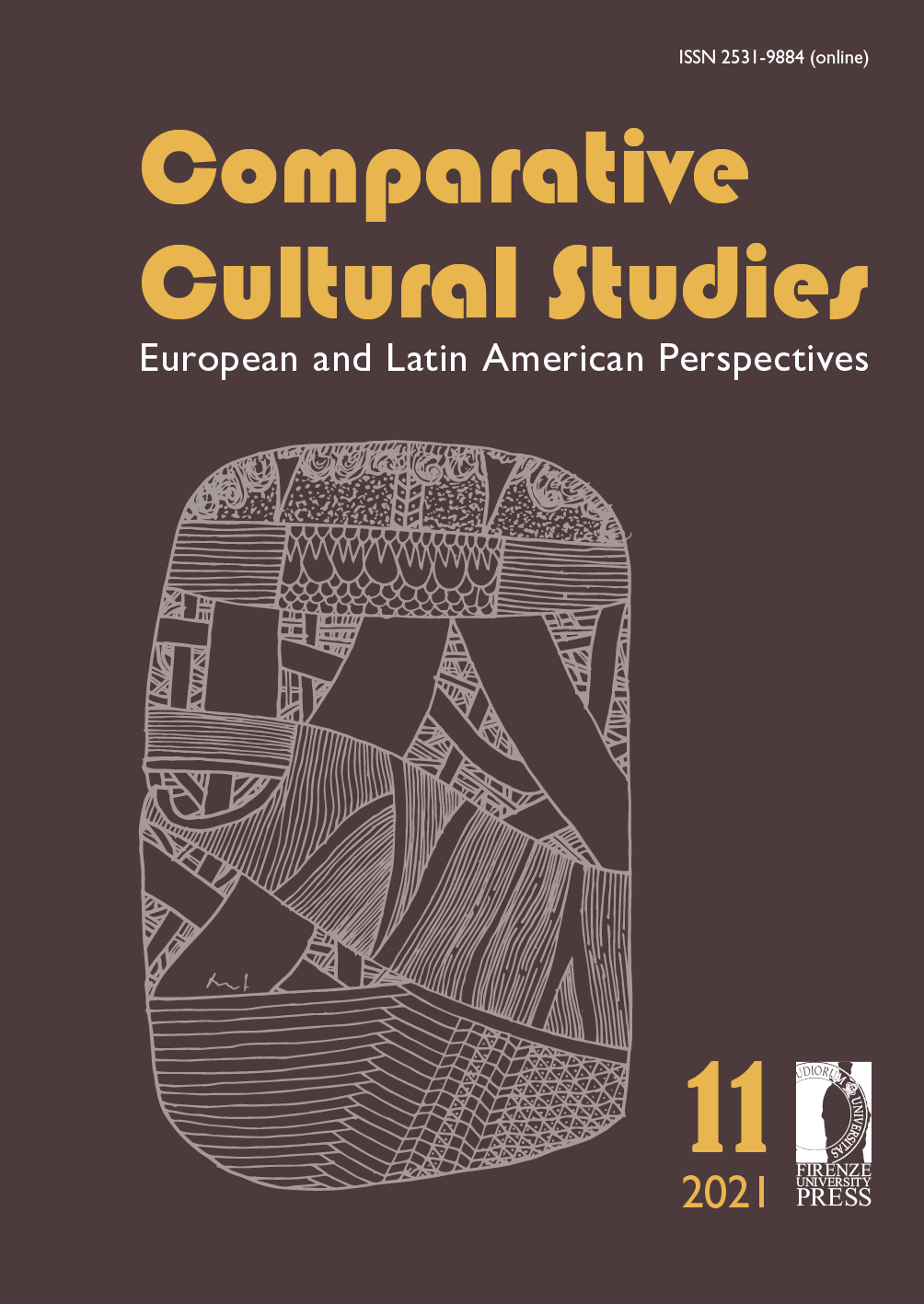Polishing Diamonds in Havana: A Personal Account of the Flight of a Jewish Refugee to Cuba, 1938-46
DOI:
https://doi.org/10.13128/ccselap-12518Palavras-chave:
Cuba, diamond industry, Holocaust, Jewish refugees, World War IIResumo
Thousands of European Jewish refugees found acceptance on the island of Cuba at the outbreak of World War II. The author provides a unique portrayal of this time by utilizing her mother’s firsthand account of the safety her family found there as refugees from Nazi-occupied Europe. The article draws from primary sources, includ-ing the author’s mother’s story, photos, diary and documents, and places the event in the context of the Cuban politics, economics, and perceptions at the time. The refu-gees brought the new industry of diamond faceting to Cuba, though, in the end, it was short-lived. The article illustrates the acceptance of refugees, communal respect, and working together for mutual benefit.
Downloads
Referências
American Jewish Joint Distribution Committee Archives, (n.d.), <https://archives.jdc.org/>.
Bauer Yehuda, My brother’s keeper: A history of the American Jewish Joint Distribution Committee 1929-1939, Philadelphia, The Jewish Publication Society of America, 1974.
Bejarano Margalit, The Jewish community of Cuba: Between continuity and extinction, in «Jewish Political Studies Review», vol. 3, nn. 1/2, 1991, pp. 115-140.
Bejarano Margalit, The Jewish community of Cuba: Memory and history, Israel, The Hebrew University Magnes Press, 2014.
Finkels Kreith Marion, Diary 1943–1945, Kreith Family Archives, 1943-1945.
Finkels Kreith Marion, Personal interviews, 2012–Present.
Frolich Marion, Personal interview, 2014.
Guede E., Pasado y presente de la industria del diamante en Cuba, Bohemia, November 7, 1948.
Kreith Frank, Sunrise Delayed - A Personal History of Solar Energy, Scotts Valley (CA), CreateSpace Independent Publishing Platform, 2014.
Kornbluh Peter, Cuba’s welcome to a Covid-19-stricken cruise ship reflects a long pattern of global humanitarian commitment, in «The Nation: Foreign Policy», March 21 2020; at the moment it is available at: , consulted on 20 September 2020.
Lande L., Di diamentn industrie in Cuba. Havaner Lebn Almanach, 1944.
Laureys Eric, Meesters van het diamante, Tielt, Lannoo, 2005.
Levine R.M., Tropical diaspora: The Jewish experience in Cuba, Gainesville, University Press of Florida, 1993.
Levinson Jay, Jewish community of Cuba: The golden age, 1906–1958, Nashville, Westview Publishing, 2006.
Maitland Leslie, Crossing the borders of time: A true story of war, exile, and love reclaimed, New York, Other Press, 2013.
Manning Jeanne, A time to speak, Paducah (KY), Turner Publishing Co., 1999.
Parks H.W., Making law of war treaties: Lessons from submarine warfare regulation, in M. N. Schmitt (ed.), International Law Studies - Volume 75, International Law Across the Spectrum of Conflict, Essays in Honour of Professor L. C. Green On the Occasion of His Eightieth Birthday, Newport – Rhode Island, Naval War College Press, 2001.
Sjenitzer-Sanders Tineke, Jewish diamond workers find refuge in Cuba. [Unpublished paper]. Israel, Hebrew University, 2011.
Thomas G., Witts M. M., Voyage of the damned, New York, Stein and Day, 1974.Truesdale R., Kreith J. (Directors). (2017). Cuba’s forgotten jewels: A haven in Havana[Film]. <https://forgottenjewelsfilm.com/>.
Further Reading
The following references were useful for the research. Articles and books listed in this section are provided for the reader wanting more information.Behar Ruth, An island called home: Returning to Jewish Cuba, New Brunswick, Rutgers
University Press, 2009.
Corrales Maritza, The chosen island: Jews in Cuba, Chicago, Salsedo Press, 2005.
De Vries David, Diamonds and war: State, capital, and labor in British-ruled Palestine, New York, Berghahn Books, 2010.
Engle Margarita, Tropical secrets: Holocaust refugees in Cuba, New York, Henry Holt & Co., 2009.
Epstein E. J., The rise and fall of diamonds: The shattering of a brilliant illusion, New York, Simon & Schuster, 1982.
Erdman Paul, Diamonds are not forever, in «The New York Times Book Review», June 20, 1982; <https://www.nytimes.com/1982/06/20/books/diamonds-are-not-forever.html>.
Lanza M. B. (& authors incl. González López, R. M.), Presencia alemana en Cuba. Deuts-che Spuren in Kuba. Mapa plegable etnográfico. Escala 1:2,488,000, La Habana, Edi-ciones GEO / Fundación Fernando Ortiz, [Pamphlet], 2008.
Klein Arthur, An unplanned roundtrip, Falls Village (CT), Hamilton Books, 2009.
Palmer G., Gateway to the promised land, in «Liberty», 21(6), 14-15, February 5, 1944, 38.
Richman B.D., How communities create economic advantage: Jewish diamond merchants in N e w Yo r k, in «Law & Social Inquiry», 31(2), Spring 2006, pp. 383-420.
Ronald Robert, Last train to freedom: A story of a Holocaust survivor’s travel to America, Self-published, 1997.
Rosshandler Felicia, Passing through Havana: A novel of a wartime girlhood in the Carib-bean, New York, St. Martin’s Press, 1984.
Sapir Boris, The Jewish Community of Cuba: Settlement and Growth, New York, J.T.S.P. University Press, 1948.
Downloads
Publicado
Como Citar
Edição
Secção
Licença
Direitos de Autor (c) 2021 Judith Kreith

Este trabalho encontra-se publicado com a Licença Internacional Creative Commons Atribuição 4.0.
Esta licença permite que terceiros partilhem (copiem e redistribuam o material em qualquer meio ou formato) e adaptem (remisturem, transformem e criem a partir do material para qualquer fim, incluindo comercial), desde que a autoria e a primeira publicação nesta revista (A Revista, DOI do trabalho) sejam reconhecidas, seja fornecida uma hiperligação para a licença e seja indicado se foram feitas alterações ao trabalho.







